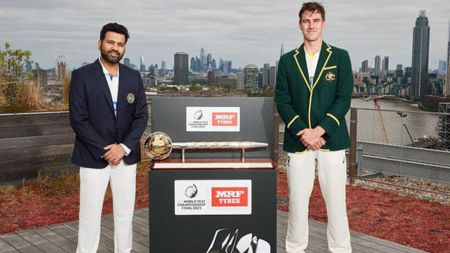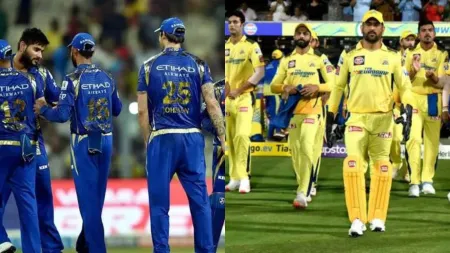What powered India’s best-ever medal haul at Paralympics: Nine women who won 10 medals
Deepa Malik recalls a conversation with a young woman with a disability who was considering a career in sports.
“She asked me, ‘If I am on a long flight, how do I even use the washroom with my wheelchair?’ These were the basic barriers they feared,” Malik, one of India’s para-sports pioneers, says. Another time, another athlete confided in her: “Humein bekaar samajh liya gaya tha, bojha kehte the (they considered us good for nothing, called us a burden).”

These women, overcoming prejudice and accessibility issues, have propelled India to a place in the Paralympics where she has never been before. In a late-night podium assault on Tuesday, India’s para-athletes won four medals in 30 minutes to take the overall tally at the Paris Paralympics to 20 – one more than the country won in Tokyo three years ago.
It is India’s best-ever performance at the Paralympics since they came into existence in 1960. On Wednesday afternoon, men’s shot-putter Sachin Khilari won a silver medal to make it 21 medals for India (3 gold, 8 silver, 10 bronze). There are more events where Indian athletes are expected to win medals before Sunday’s closing ceremony.
Hidden behind these numbers is the story of the rise of India’s women para-athletes, who have driven this surge.
At the Rio Paralympics in 2016, Malik became the first Indian woman to win a medal (a silver) at the Games. Eight years on, in Paris, 9 different women have finished on the podium, contributing 10 medals to the overall tally.
Sprinter Preethi Pal, who was rewarded with a Grade 1 government job, is India’s only double medallist at these Paralympics where the floodgates were burst open by shooter Avani Lekhara, who won her second consecutive gold medal.
These have been landmark Games in other aspects too. Seventeen-year-old Sheetal Devi, who is fast emerging as one of the faces of the global para-sports movement, teamed up with Rakesh Kumar to win only the second-ever medal for India in para-archery, a bronze.
The rise in para-badminton, where India won four medals in Tokyo, was underlined as India went one better this time. In track-and-field, too, India’s athletes exceeded the medal count from the previous Paralympics, winning 11 as of Wednesday afternoon.
Each medal winner has a story to tell. Lekhara overcame a spinal cord injury, which left her paralysed from the waist below. Her shooting teammate Mona Agarwal had to hear taunts from her relatives for being a girl child and polio-stricken. IAS officer Suhas Yathiraj joined an elite club of multiple Paralympic medallists, winning a silver. Another silver medallist Sachin Khilari gave up on his civil services ambitions as he chased the Para Games podium.
And then, there’s the story of high jumper Sharad Kumar, whose coach Nikitin Yevhen is stranded in Ukraine in the middle of the war with Russia.
“I have been doing online coaching with him. He cannot move around, he is the only man in the house because his kids are (fighting) in the war. So it’s a difficult situation. But his blessing, his guidance is always there with him,” Sharad said on Wednesday.
But if there will be one major takeaway for India from these Games, it will be the emergence of the women para-athletes.
Before the Paris Paralympics, India’s women had won just four medals at the Games – one in Rio followed by three in Tokyo. They equalled that tally in just one day – Monday, September 2, which was also India’s greatest day at the Paralympics, winning eight medals overall.
‘Signalling effect’
“It’s a signalling effect,” says Nandan Kamath, the managing trustee of GoSports Foundation, a private organisation that has been supporting para-athletes for over a decade through its CSR supported programs. “Rio was a turning point and when Deepa Malik won one of the medals it led to media coverage and awareness and perhaps instilled belief in other women with disability that they can do it too. We also saw a rise in government and private funding. And as a consequence of this change in climate, there has been an increase in the participation numbers at a national level, which then has translated into better performances internationally.”
Although she doesn’t have the exact figures, Malik – who went on to head the Paralympics Committee of India – says there was a ‘300 per cent rise in the participation numbers of women para-athletes in national tournaments from 2015 till present.’
In Paris, there are 32 women, the highest ever, in India’s athlete contingent of 82, representing in 11 out of 12 sports – swimming is the only discipline where there are no women. This trend is in continuation of what was seen at the Asian Para Games last year, where there was at least one woman representation in 16 out of the 17 sports – the 17th, blind football, was only for men.
Medal and empowerment
“They have seen how empowered a woman with a medal can become. When the Prime Minister applauds you, you get crores of rupees… I got a home in NCR (National Capital Region) with that money and bought a new car,” Malik says. “They saw that if a 45-year-old could do it, then they can too.”
Malik adds: “This is a culmination of years of demanding at-par policy and initiating a change. When you see the change actually take place, it’s very soul-satisfying.”
Disclaimer: The copyright of this article belongs to the original author. Reposting this article is solely for the purpose of information dissemination and does not constitute any investment advice. If there is any infringement, please contact us immediately. We will make corrections or deletions as necessary. Thank you.





